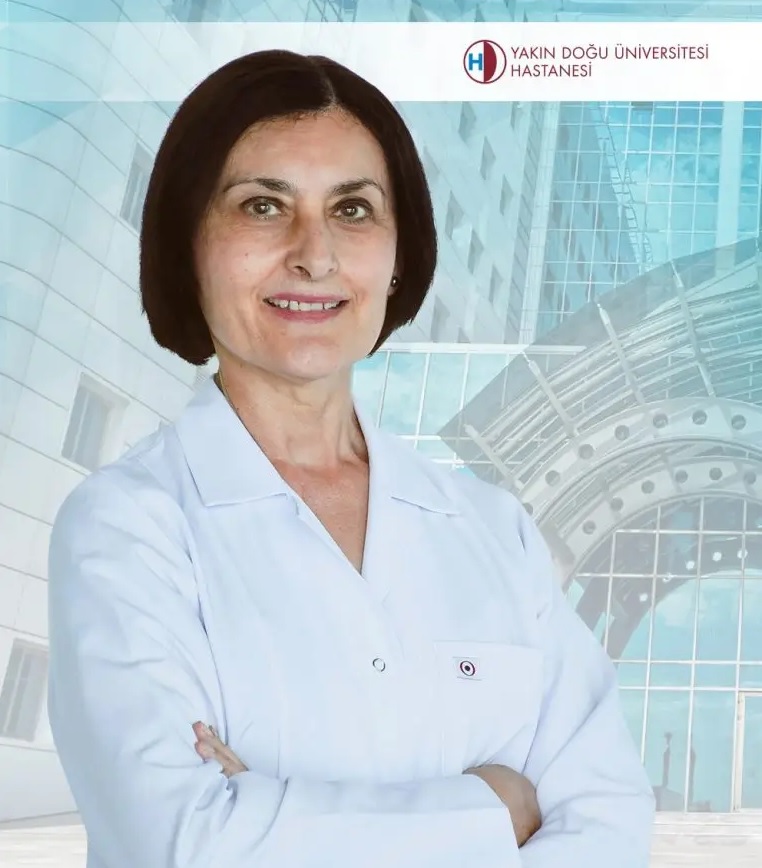
Rheumatoid joint diseases are diseases that significantly reduce people’s quality of life because they negatively affect their mobility. Rheumatoid Arthritis is the most common type of inflammatory joint rheumatism. Dr. Hülya Dede Vahedi, a rheumatologist at the Department of Internal Medicine at the Near East University Hospital, gave important information about Rheumatoid Arthritis, a chronic disease that can last a lifetime. Dr. Hülya Vahedi says that Rheumatoid Arthritis, a lifelong disease, is most common in women and between the ages of 25 and 55.
“The probability of developing Rheumatoid Arthritis in first-degree relatives of a patient with Rheumatoid Arthritis is ten times higher than normal,” said Specialist Dr. Hülya Dede Vahedi, and added; “The HLA-DRB1 gene is the gene most responsible for this disease. In people with a genetic predisposition, some environmental factors play a role in the development of the disease. Among environmental factors, smoking and the bacteria called Porphyromonas gingivalis, which is responsible for chronic gingivitis in the mouth, are known to play a role in the development of Rheumatoid Arthritis.”
Most common in women
Specialist Dr. Hülya Vahedi, who said that Rheumatoid Arthritis is seen at a frequency of approximately 0.5 to 1 percent, also stated that this disease is seen most frequently in women. Specialist Dr. Vahedi said that Rheumatoid Arthritis most frequently begins between the ages of 25 and 55 and that the symptoms of the disease are mainly seen in the joints and the tendons around the joints. Since Rheumatoid Arthritis is also a systemic disease, symptoms can be seen in subcutaneous nodules, lungs, heart and some other organs in addition to joints.

Joint swelling is the most important symptom
Providing information about the symptoms of the disease, Specialist Dr. Hülya Dede Vahedi said that joint swelling and morning stiffness lasting more than an hour are important symptoms. Stating that the disease typically starts with swelling and stiffness in the small joints of the hands and feet, wrists and ankles, Specialist Dr. Vahedi also stated that stiffness is also seen in the elbows, shoulders, knees and hip joints over time. Specialist Dr. Hülya Dede Vahedi also said, “New joint involvements occur within months. Symmetrical involvement is an important finding. More than five joints are affected in typical Rheumatoid Arthritis patients. Morning pain and night pain are high. Joint pain and stiffness in the mornings decrease with movement. Symmetrical involvement is an important finding.”
It can be seen in more than one joint
In some cases, Rheumatoid Arthritis can develop very quickly, said Specialist Dr. Hülya Dede Vahedi, and stated that the disease causes pain, swelling and stiffness in all joints. Specialist Dr. Vahedi said that Rheumatoid Arthritis patients can have so much pain and stiffness that they cannot get out of bed, and that the disease can occur in a single joint or several joints. Stating that Rheumatoid Arthritis has a palindromic form of onset, Specialist Dr. Vahedi stated that in such onsets, there is acute swelling in a single joint and it can completely heal in about three days. She said that these attacks can reoccur in another joint months later.
Stating that there is also a type of the disease that starts at an advanced age, Specialist Dr. Vahedi stated that in this case, the disease starts with severe morning and night stiffness in the shoulders and hips. Specialist Dr. Vahedi warned that Rheumatoid Arthritis can sometimes be confused with another disease called Polymyalgia Rheumatica.
Starting treatment on time can prevent permanent physical deformation
Specialist Dr. Vahedi said that if the diagnosis and treatment of people with Rheumatoid Arthritis is delayed, deformations such as swan neck deformity, buttonhole deformity and ulnar deviation can be seen in the hands, and that the diagnosis of the disease can be made mainly by the complaints of the patients and examination findings. Dr. Vahedi stated that the follow-up of the patients and some laboratory and radiological findings can also be helpful in making the diagnosis. Dr. Hülya Dede Vahedi said, “Other possible diseases must be excluded for a definitive diagnosis. Corticosteroids and basic drugs that change the course of the disease are used in the treatment of Rheumatoid Arthritis. It is important for patients to do exercises that strengthen their joints and muscles in addition to drug treatments.”